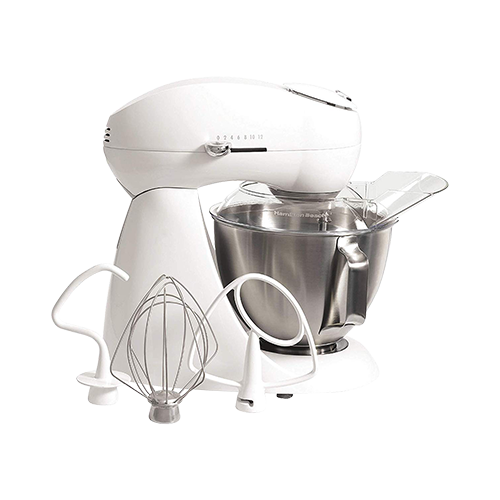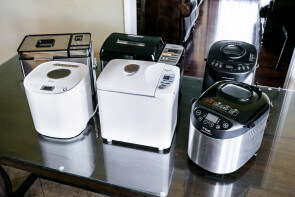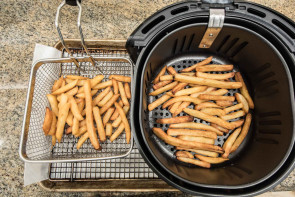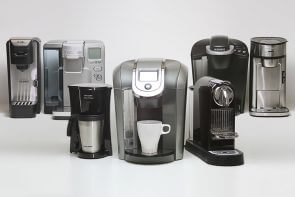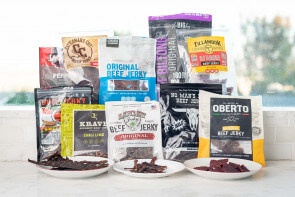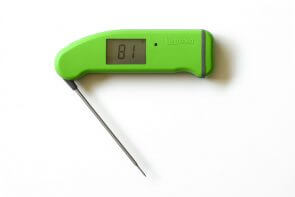
The Best Stand Mixers
We subjected five highly rated stand mixers to rigorous testing — from making light-as-air sponge cake batter to perfectly kneaded pizza dough — and the KitchenAid – KSM150P performed the best. It’s a bit expensive, but if you’re a frequent baker, you may consider it a worthy investment. The Hamilton Beach – Eclectrics has a sturdy and functional design that’s similar to the KitchenAid, but at $100 less, it’s a more affordable stand mixer.
We subjected five highly rated stand mixers to rigorous testing — from making light-as-air sponge cake batter to perfectly kneaded pizza dough — and the KitchenAid – KSM150P performed the best. It’s a bit expensive, but if you’re a frequent baker, you may consider it a worthy investment. The Hamilton Beach – Eclectrics has a sturdy and functional design that’s similar to the KitchenAid, but at $100 less, it’s a more affordable stand mixer.
Table of contents
- How we selected
- The 5 stand mixers we tested
- Who needs a stand mixer
- Important features to consider
- How we tested
- Best stand mixer: KitchenAid – KSM150PSWH
- Budget pick: Hamilton Beach – 63232
- Other products we tested
- The bottom line
How we selected
If you Google “stand mixer,” you’ll find many websites and videos promoting the best one you should buy. However, when you take a closer look, you’ll see that an overwhelming majority don’t actually take the time to test the product, or if they do, test methods are vague.
We found two exceptions in our initial phase of research: The Wirecutter and America’s Test Kitchen’s video review. America’s Test Kitchen’s test methods are solid, but the review is five years old so the recommendations may no longer be valid. We then turned to Amazon, where KitchenAid stand mixers reign supreme, and read through many of the thousands of reviews (KitchenAid alone has over 9,000).
KitchenAid has many versions of stand mixers that are rated extremely high overall by consumers. Depending on the model (and color), they range between $200–$500. But who are KitchenAid’s competitors? There aren’t many.
We chose to focus on finding stand mixers with an affordable price, the convenient tilt-head design, a mixing bowl with a substantial 4.5 to 5-quart capacity, and high customer esteem. Once we had our list, we cross-referenced the stand mixers with the manufacturers’ websites to ensure we tested the most recent model.
The 5 stand mixers we tested
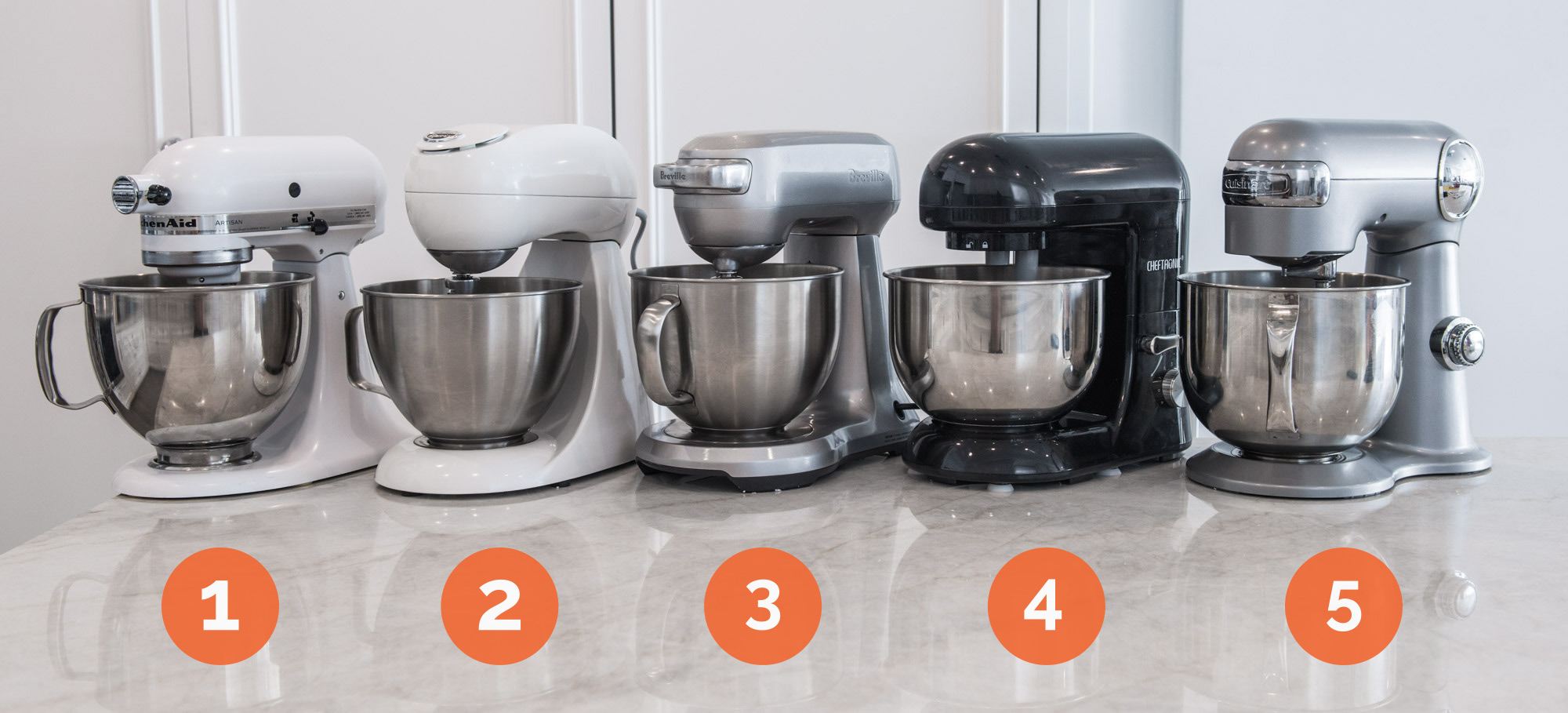
| Product | Price | Wattage | Weight (lbs) | Capacity (quarts) | Ease of Use | Performance |
|---|---|---|---|---|---|---|
| 1. KitchenAid - KSM150PSWH | $$$ | 325 | 22 | 5 | 5/5 | 5/5 |
| 2. Hamilton Beach - 63232 | $$ | 400 | 19.3 | 4.5 | 4/5 | 5/5 |
| 3. Breville - BEM800XL | $$$$ | 550 | 21.2 | 5 | 4/5 | 4/5 |
| 4. Cheftronic - SM986 | $ | 650 | 11 | 5.5 | 3/5 | 3/5 |
| 5. Cuisinart - SM-50BC | $$ | 500 | 17 | 5.5 | 3/5 | 2/5 |
Who needs a stand mixer?
If cupcakes, sugar cookies and cake mixes are the extent of your baking repertoire, then you probably just need a hand mixer and a sturdy mixing bowl. But if you’re a more frequent baker of yeast breads, sponge cakes, chunky cookies, fluffy meringues and pizzas, then a heavy-duty stand mixer has the power and size to substantially decrease your time and effort.
While a hand mixer is a light and portable appliance, most stand mixers require kitchen counter space. Some have evolved to become slightly more compact, but they’re still pretty tall (12 to 14 inches) and hefty (up to 26 pounds), which makes storing them in a kitchen cabinet difficult if not impossible.
Another consideration is price. You can buy a very good hand mixer for about $30, but a well-built stand mixer is much more expensive. There are certainly cheaper models to choose from (and we tested one — the Cheftronic – SM986), but many Amazon reviewers claim that the motors and attachments of the cheaper mixers don’t hold up. If you can afford $300 and are committed to baking on a frequent basis, then a quality stand mixer is well worth it.
Important features to consider
Professional vs. commercial: Almost all stand mixers intended for home kitchens are marketed as “professional” grade. A commercial stand mixer is too large for a home kitchen and is used exclusively in restaurants and bakeries. It can also cost three or four times more than a professional mixer.
Planetary motion: There are two types of stand mixers: planetary motion and spiral. Planetary motion refers to how the mixer’s attachment revolves — like a planet’s orbit — inside the fixed mixing bowl. Planetary motion mixers are designed for both home and commercial use. A spiral mixer, used exclusively in commercial kitchens for preparing large batches of dough, revolves the mixing bowl and hook attachment together.
Tilt-head vs. bowl-lift: Many newer models of stand mixers have a tilt head — a button or lever loosens the mixer’s head so it can be lifted backward to accommodate easy removal of attachments and the mixing bowl. Older models have a “bowl lift” head in which a lever raises and lowers the mixing bowl. While bowl-lift stand mixers are heavier and sturdier, tilt-head mixers are lighter and more compact. It’s easier to add ingredients into a bowl-lift mixer, but it’s easier to clean and store a tilt-head mixer.
Mixing bowl shape and depth: During our testing, we found the shape and depth of the mixing bowl to be crucial to the mixer’s efficacy. All of the mixing bowls we tested had a 4.5- to 5-quart capacity. Half of them had rounded bottoms, and with these, the mixer struggled to reach ingredients (such as egg whites and whipping cream). The better mixing bowls had a slight taper, which kept the wet ingredients contained in a compact pool that the attachments could reach and lift up.
Attachment length: All stand mixers come with three attachments: a wire whisk, a mixing paddle and a dough hook. The length of attachments is of primary importance, since they need to reach the sides and bottom of the mixing bowl. Half the mixers — KitchenAid, Breville and Hamilton Beach — had attachments that easily incorporated ingredients with minimal or no scraping needed. The other mixers had attachments that were too short and not broad enough to incorporate ingredients without our stopping, scraping and re-starting.
Splatter shield: We prefer a c-shaped splatter shield over an enclosed-ring splatter shield. A c-shape splatter shield, which slides into place on top of the mixing bowl, can be easily attached and removed without lifting the tilt head. An enclosed-ring splatter shield, however, must be attached to the mixer head before affixing or releasing the attachment and then lowered together onto the bowl.
Power: A stand mixer should have at least 325 watts of power. However, a mixer with more wattage does not necessarily mean that it’s more efficient. The mixer’s motor must be precisely engineered to harness wattage to create adequate torque (the force needed to rotate an object), which is essential for kneading dough.
For example, the KitchenAid mixer has only 325 watts, but its excellent torque can knead pizza dough into a compact ball. The Cheftronic mixer has double the wattage, but it shook violently and struggled to incorporate the ingredients and knead the dough during our testing.
Speed levels: The mixers we tested had six to twelve speed levels. There was minute differentiation between the mixers that had 12 speeds. In actuality, you probably just need five speed levels: a true low for incorporating flour or wet ingredients without splatter; a medium-low, medium and medium-high for combining ingredients; and a true high for aerating egg whites and whipping cream.
How we tested
We devised tests that worked the most commonly used functions of a stand mixer: creaming butter and sugar, blending cake batter, whipping egg whites and cream, blending cookie dough with mix-ins and mixing pizza dough.
| Product | Whip Egg Whites (minutes) | Whip Cream (minutes) | Mix Pizza Dough | Mix Cookie Dough | Mix Cake Batter |
|---|---|---|---|---|---|
| 1. KitchenAid - KSM150PSWH | 1:00 | 1:00 | 5/5 | 5/5 | 5/5 |
| 2. Hamilton Beach - 63232 | 1:30 | 1:10 | 5/5 | 5/5 | 5/5 |
| 3. Breville - BEM800XL | 1:10 | 1:09 | 5/5 | 3/5 | 4/5 |
| 4. Cheftronic - SM986 | 3:50 | 2:05 | 3/5 | 3/5 | 4/5 |
| 5. Cuisinart - SM-50BC | 3:09 | 1:36 | 2/5 | 2/5 | 2/5 |
Small-batch whipping
Egg whites: We began with small-batch whipping to test whether the mixer’s attachments could reach the bottom of the mixing bowl. For each mixer, we put two room-temperature egg whites into the bowl and started the mixer at its slowest speed. Once the egg whites began to foam, we gradually increased the speed to the highest setting and timed how long it took for the whites to stiffen to a meringue consistency — in other words, a consistency that would not plop out when we held the mixing bowl upside down.
The KitchenAid, Breville and Hamilton Beach whipped the egg whites to a meringue consistency in one minute.
The Cuisinart and Cheftronic just foamed the two egg whites because their whisks could not reach the bottom of the mixing bowls. However, once a third egg white was added, the whisks could at least reach enough of the egg white to pull it upwards and whisk it to froth.
Cream: We poured one cup of chilled heavy cream into the bowl and began at the slowest speed, waiting until the cream frothed and then gradually increased to the highest speed. Results were similar to those of the egg white test. The KitchenAid, Breville and Hamilton Beach whipped thick whipped cream in one minute.
Because of their short whisks, Cuisinart and Cheftronic failed to whip one cup of cream. We added a second cup and both achieved fully whipped cream in about two minutes.
Cake batter
We used “The Great British Baking Show” judge Mary Berry’s recipe for genoise, or sponge cake, which serves as the base for many types of iced cakes.
The recipe differs from other sponge cakes in that the eggs are not cooked over a double-boiler before adding them to the other ingredients. Instead, everything is blended together all at once, and to achieve a light and airy cake, the stand mixer must be able to evenly mix the ingredients while also whipping the eggs and creaming the butter into a smooth batter. If the mixer fails to do so, or if excess scraping of the bowl is required, then the cake won’t rise when baked.
The Breville and the Cheftronic have a silicon scraper on their paddle attachments. This nice addition worked well in scraping the sides of the bowl during blending so we didn’t need to stop, scrape and restart.
Cookie dough
We wanted a thick cookie dough with lots of mix-ins to test each mixer’s power and torque. This delicious recipe for super chunky cookies allows you to add whatever you like to the dough. Our mix-ins included peanuts, chocolate chips, butterscotch chips, raisins and M&Ms, which proved to be a challenge for the Cuisinart and Cheftronic. Their squat paddles simply couldn’t reach down to the bottom of their too-deep mixing bowls, so the ingredients had to be mixed by hand.
Surprisingly, we also had a bit of trouble with the KitchenAid and Breville. Although their motors breezed easily through the thick dough — even at the highest speed — there were small amounts of mix-ins left untouched at the bottom of the bowl. Only the Hamilton Beach was able to thoroughly blend the cookie dough and mix-ins together.
Pizza dough
The most challenging test for the stand mixers was the pizza dough. The mixer’s hook attachment must first blend the ingredients together and then knead them into a compact yet elastic ball. We used a standard recipe for the pizza dough, but we cut the proportions in half, which better suited the 4.5- to 5-quart capacity bowls. Even with the half batch, the usual culprits — Cuisinart and Cheftronic — failed to combine the ingredients and shook violently when the mixer kneaded the dough.
As an additional test — and something you really shouldn’t do at home — we increased the speed to the highest level during the kneading to see whether the motor gave out. The KitchenAid and Breville vibrated slightly, but they clearly were able to handle the dough at high speed. The Hamilton Beach shook rather ominously, but it kept right on kneading and seemed to hold out.
Best stand mixer: KitchenAid – KSM150PSWH
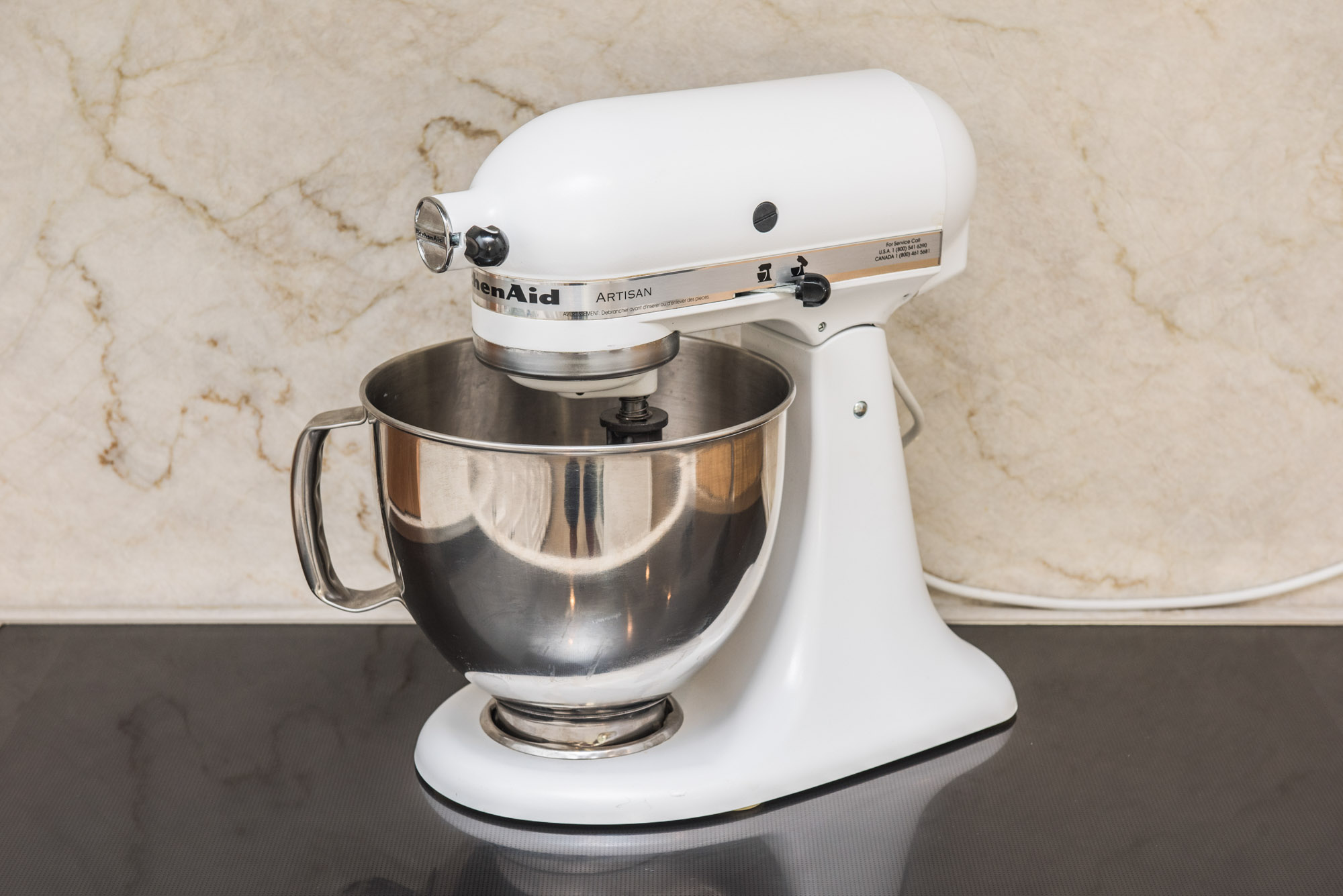
KitchenAid has been the leader in stand mixers for years. The KitchenAid – KSM150PSWH is one of the popular Artisan Series tilt-head mixers and comes in a variety of sizes, styles and colors.
It’s slightly smaller and a bit more compact than KitchenAid’s other stand mixers, but it still isn’t ideal for storing in a cabinet because it weighs in at 25 pounds. That heft, however, keeps the all-metal mixer secure on the countertop even at the highest speed. Its 325-watt motor has enough power to plow through cookie and pizza dough without showing signs of strain, and it performs every task in minutes. As stand mixers go, it’s also quiet.
The KitchenAid is very easy to use. Its tilt head is locked and released with a lever on one side, and it tilts far back enough for easy insertion of attachments. The five-quart stainless steel mixing bowl locks firmly into place by turning it slightly clockwise. Lower the tilt head and you’re ready to go.
Most User-Friendly: KitchenAid - KSM150PSWH
User-friendly tilt-head design with a well-calibrated motor, the KitchenAid delivers great performance for all stand-mixer tasks. It’s less expensive than previous KitchenAid models, and with the separately bought attachments, it can also roll out pasta, grind meat and spiralize vegetables.
The KitchenAid has 10 speed levels, marked as Stir, 2, 4, 6, 8 and 10. They’re controlled with a side lever that clicks into place. For the odd-numbered speeds, you need to hold the control lever and gently guide it to the speed you want. There isn’t much differentiation between the odd- and even-numbered speeds. The even-numbered speeds are so well differentiated, however, you don’t really need the other five.
The mixing bowl is slightly tapered, so when you lower the attachments (nylon-coated paddle and dough hook, stainless steel wire whisk) you’ll notice immediately that each touches the bottom and sides of the bowl. For each of our recipes, we needed to do very little — and sometimes no — scraping to incorporate the ingredients.
The KitchenAid was the top performer in all of our tests. It smoothly creamed the butter and aerated the eggs to create an evenly blended cake batter, which baked light and airy. It had no problems blending the large amount of mix-ins into the thick cookie dough and it kneaded a perfect ball of pizza dough in five minutes. Since the mixer’s attachments touch the bottom of the mixing bowl, the wire whisk whipped the egg whites and cream to fluffy heights in one minute.
The KitchenAid stand mixer can really do anything, except perhaps wash your clothes. Its extraordinary design includes a hub on the mixer head into which a variety of (separately purchased) attachments can be plugged, such as a pasta maker, meat grinder, cheese shredder and even a spiralizer.
So although all KitchenAid stand mixers are on the pricey side, you’re getting much more for your money, since your mixer can be swiftly transformed into another kitchen appliance. (For the record, we’ve tested the pasta maker and the meat grinder, and they are excellent.)
Although KitchenAid’s warranty is only for one year, the Artisan stand mixer is so well-constructed that, if properly cared for, it will last for many years. We believe there isn’t a stand mixer on the market that can beat the KitchenAid – Artisan Series in quality or performance.
Key takeaways:
- The KitchenAid – KSM150PSWH is sturdily constructed and has plenty of power to plow through thick cookie dough and pizza dough in minutes.
- Its mixing bowl and attachments have been designed to work together for optimal mixing and blending with minimal scraping.
- The KitchenAid – Artisan Series is very user-friendly, and it will have you baking like a pro straight out of the box.
Budget pick: Hamilton Beach – 63232
Hamilton Beach really scores with this beautifully made stand mixer from its line of Eclectrics kitchen appliances. The Hamilton Beach – 63232 has many similar features that our top pick has, including its all-metal construction and (at this writing) it’s $120 cheaper. We’ve reviewed many Hamilton Beach products, and most have, sadly, been disappointing. However, their Eclectrics series stand mixer is top notch and nearly equally as good as the KitchenAid – Artisan.
Like the Artisan, the Hamilton Beach has the tapered mixing bowl that we find is most effective for blending small-batch ingredients. Indeed, it whipped two egg whites in a minute and a half to meringue consistency and one cup of cream into fluffy perfection in one minute.
Again, the Hamilton Beach’s efficacy is due to the length and width of the attachments (nylon-coated paddle and dough hook and stainless wire whisk), which reach the bottom and sides of the mixing bowl.
The Hamilton Beach has 400 watts, slightly more than the KitchenAid – Artisan, and its torque is just as good. It incorporated all the ingredients for the cookie dough and pizza dough well enough, but not without some vibration, especially at higher speeds.
The Hamilton Beach blended the cake batter in two minutes, and when baked, it was moist and firm with a good crumb. It was absolutely the best of all the cakes we made with the mixers. Despite the vibration at the middle speed, the mix-ins were fully incorporated into the cookie dough, and when baked, the cookies came out of the oven exactly the same as those we made with the KitchenAid.
The Eclectrics had a bit of trouble with the pizza dough. The machine shook when it was kneading and the dough took various forms during the kneading process, running up and down the hook as a cylinder, then an oval before forming a compact ball. However, when the kneading was completed, the dough was beautifully shiny, smooth and elastic; again, the best of the pizza doughs we made.
The Hamilton Beach has a few negatives that are not deal-breakers. First, the button for releasing the tilt head is located inconveniently beneath the base of the head and we had trouble finding it when the head was tilted back. Second, like the KitchenAid, speed levels are even-numbered — 2 through 12 — and there is almost no differentiation between them and the odd-numbered levels (not marked on the blender). Finally, its splatter guard is an enclosed-ring type that we find inconvenient to attach and remove.
Hamilton Beach has really stepped up to the plate to compete with KitchenAid. At $120 less, the Eclectrics stand mixer is an impressive and, we believe, long-lasting alternative for budget-conscious consumers.
Key takeaways:
- The Hamilton Beach – 63232 stand mixer has a similar mixing bowl and attachments to the KitchenAid – Artisan, but it’s $120 less expensive and an excellent alternative.
- It performed just as well as our top pick and even bested the KitchenAid in our cake and pizza dough tests.
- Despite a few minor flaws, the Hamilton Beach stand mixer is solidly constructed, well-designed and will last for years with frequent use.
Other products we tested
Breville – BEM800XL
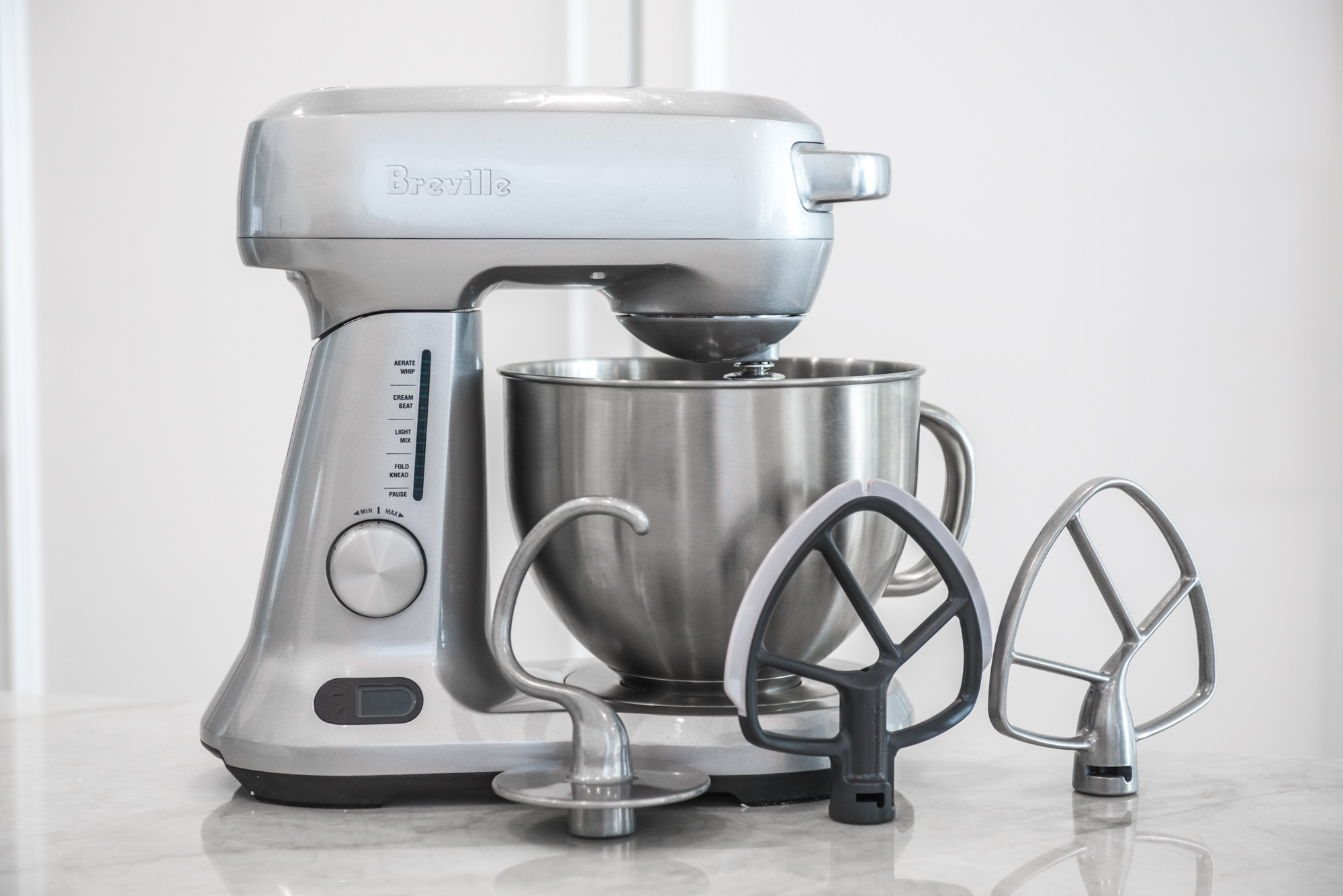
Like most Breville products, the Breville – BEM800XL stand mixer is beautifully designed. It’s a sleek machine with curved lines and a futuristic speed-control LED panel that lights up as levels are increased.
The Breville has lift-assist handles to raise and lower the tilt head, and its slightly tapered bowl easily locks into place. It has twelve speeds, labeled with a particular baking task, like fold/knead, light mix and aerate/whip. We tested all speeds, and it was one of the few mixers we tested that had a gradual increase between each speed level.
For such an attractive machine, we were surprised that it didn’t perform better. We found its pour shield most vexing. It’s c-shaped, but quite narrow and tricky to balance on top of the bowl. The pour spout clicks into the shield, which can only be done when the tilt head is lowered. Each time we tried to scrape the bowl and lifted the tilt head back, the shield popped off and the pour spout plopped into the batter or dough.
The Breville’s silicon-edged scraper paddle manages to scrape the sides of the bowl, but it’s too short and can’t reach the bottom of the bowl. The same flaw afflicts the wire whisk, which left a small pool of cream not whipped. The Breville failed the two-egg test — it just foamed the whites — but when we added a third egg white, it aerated them to a sturdy meringue texture in one minute.
The lower speeds don’t seem to be as effective as the higher speeds. The Breville struggled to incorporate the mix-ins into the cookie dough. Although it blended the pizza dough well enough, it couldn’t quite knead it until we increased the speed to medium-high. In fact, even at the highest speed, the Breville only slightly vibrated and gave no indication that the motor would fail.
It’s a very good stand mixer, but it’s slightly more expensive than the KitchenAid, which we believe to be superior to the Breville.
Cheftronic – SM986

The Cheftronic – SM986 is one of several relatively inexpensive stand mixers, ranging in price from $90 to $150. While it may seem like a bargain compared to the KitchenAid, you definitely get what you pay for in this case. It’s cheaply constructed; its entire casing is plastic. The attachments are short and stout and can’t reach the sides or bottom of the rounded stainless steel mixing bowl.
The tilt head is released by pushing down a lever, which could use a shot of WD40 in our opinion: it was so creaky, and if you don’t keep your hand on top of the head, it snaps back. Its annoying enclosed-ring splatter shield can only be removed by taking off the attachment first. Since we had to frequently scrape the mixing bowl, we needed to do this several times.
At 650 watts, the Cheftronic has double the wattage of the Cuisinart, but it’s a perfect example of a poorly made and exceedingly noisy motor that can’t efficiently harness the high wattage. There is almost no differentiation between its first three lower speeds, then it suddenly zooms into high speed at levels four through six.
The Cheftronic struggled mightily to combine the pizza ingredients, and during kneading, the entire mixer rocked back and forth rhythmically as the dough ball formed. It couldn’t handle the small-batch tests, and after we increased the egg whites and cream, it whipped both in four minutes and two minutes, respectively — much longer than the other stand mixers we tested.
The Cheftronic’s silver plastic model is priced at $150, but for $30 more, you could buy the far better Hamilton Beach – Eclectrics stand mixer instead.
Cuisinart – SM-50BC

We’re usually impressed with Cuisinart’s product line, but we weren’t with the Cuisinart – SM50BC stand mixer. It copies a few of the KitchenAid’s features, like a durable metal casing, easy-release tilt head, secure locking bowl and c-shaped splatter guard with generous pour spout.
But that’s where the similarities end. The Cuisinart has twelve speeds, controlled by a flimsy plastic dial, the first six of which have almost no differentiation. The medium and higher speeds are better defined. We had almost the exact same issues with the Cuisinart as we had with Cheftronic because of poor design: a rounded mixing bowl that’s much too deep and stubby, narrow attachments.
The mixing paddle failed to blend the butter into the cake batter, leaving stray bits behind. Plus, it couldn’t reach the mix-ins for the cookie dough, which remained untouched in the bottom of the bowl. The dough hook simply swirled the dough ingredients and the whisk just foamed and splattered the egg whites and cream — until we increased the amount of each.
This stand mixer simply doesn’t live up to Cuisinart’s reputation. The motor is powerful enough, but it can’t compensate for the mixing bowl and attachments that are virtually useless.
The bottom line
If you love to bake or bake large amounts on a frequent basis, then there’s no better kitchen appliance than a stand mixer. A great stand mixer needs to be multi-functional and have a durable, well-designed motor with sufficient power to last many years.
KitchenAid has long been a leader in manufacturing outstanding stand mixers, and its KitchenAid – KSM150PSWH — one of the Artisan Series stand mixers — is no exception. It handily out-performed all of the stand mixers we tested. The KitchenAid plowed through thick cookie dough and kneaded sticky pizza dough with ease; smoothly mixed the batter for an airy sponge cake; and whipped egg whites and cream to frothy peaks in a minute.
This KitchenAid stand mixer is so easy to use and with all the amazing attachments you can purchase, it’s like having a Transformer in your kitchen.
A less expensive option is the Hamilton Beach – Eclectrics stand mixer. It’s also well-made, and though it takes slightly longer to perform the same tasks as the KitchenAid Artisan, the Hamilton Beach stood up to our tests and even bested the Artisan in a couple of them. At $120 less than the KitchenAid, the Hamilton Beach – Eclectrics is a very good and affordable alternative.
More Reviews
Admetior - T837AH
The Best Dry Food Storage Containers
Progressive - Prepworks
Breville - BHM800SIL
Zojirushi - BB-PAC20
Toshiba - TL1-AC25CZA(BS)
EdgeStar - 34-Bottle Fridge
The Best Single-Cup Coffee Makers
Keurig - K-Elite
Lucky Jerky
ThermoWorks - Thermapen



